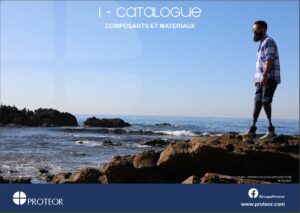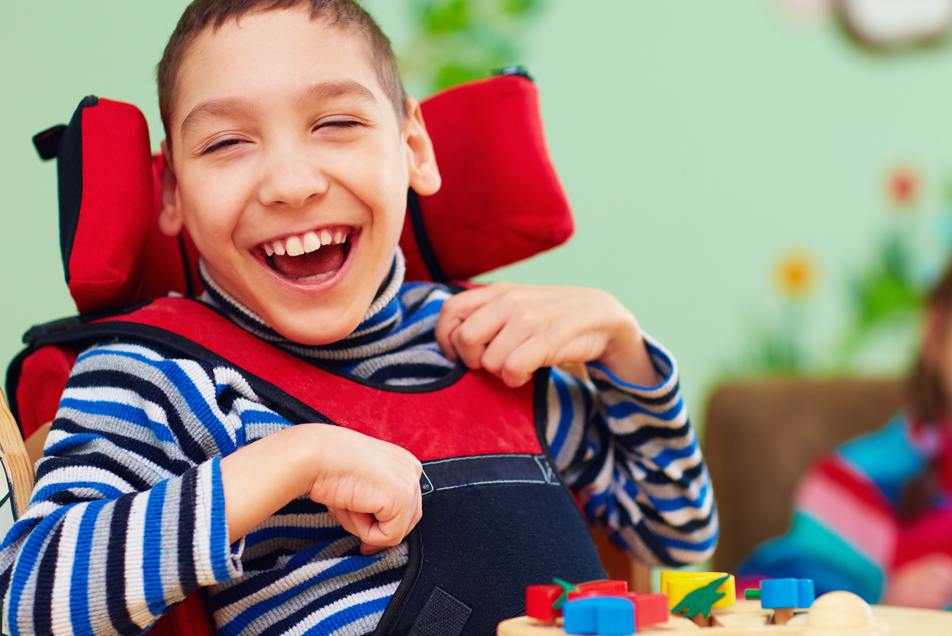Multiple disability
Reasons to choose PROTEOR for orthopedic equipment
PROTEOR has more than 75 years of experience in the field of multiple disability.
Our mission is to work with multidisciplinary medical teams and contribute our technical know-how so that, together, we can construct the best possible equipment-based solutions.
PROTEOR designs, manufactures and delivers 41,500 items of custom-made equipment to its users every year.
All PROTEOR’s orthopedic equipment is made in France.
Our workshops incorporated within the Centers for Orthopedics are equipped with specific resources, use modern technologies and are staffed by local teams trained to listen and respond to your requests.
Whenever necessary, these workshops within the Centers for Orthopedics can ask for assistance from our central manufacturing facility which is capable of producing 10,000 items of equipment a year.
With our network of more than 60 centers for orthopedics across France. We can ensure that the monitoring of your orthopedic therapy is uninterrupted if you move house or encounter problems when away from home.
Find the center for orthopedics nearest to you: click here
PROTEOR designs and develops a wide range of fabrics, straps, transfer papers, and manufacturing materials as well as the thermoplastics used to manufacture and individualize equipment.
To find out more about these components: click here
Our team of R&D engineers develop software specifically for orthotists/prosthetists to facilitate and improve the design of our equipment.
On a daily basis, PROTEOR orthotists/prosthetists use:
- Orten3DCam, acquisition of the user’s body shape, quickly, comfortably and accurately
- OrtenShape, rectification and design performed using software developed specifically for orthopedics
- OrtenMake, efficient manufacture of spinal orthoses using our numerical milling machines
To find out more about Orten application software: https://orten.proteor.com/
Our equipment solutions
The stages involved in providing orthopedic equipment
PROTEOR orthotists follow their patients from infancy through to adulthood at specialized centers, during multidisciplinary consultations, and in our centers for orthopedics; they always make time to listen to the user and work closely and effectively with the medical team and the user’s family.
Before any production work can begin, the orthotist assesses the user to determine their optimal positioning and analyzes their specific requirements, working closely with the medical and paramedical teams and with everyone involved.
The orthopedic spinal othosis-seat is individualized and adapted to every user by fitting, where necessary, one of the many possible add-ons, such as: fixed or adjustable headrest, footrest, tray, wheelbase.
To facilitate cleaning and looking after the products, the seats and mattresses may be painted with a waterproof product or fitted with a cover.
To make the seat more appealing to users and their carers, and thus to improve its acceptability, we pay particular attention to the appearance and finish of the product. We offer a large selection of colors and decorative designs.
All the equipment of this type is custom-made from a profile of the user’s body shape obtained by molding, digital scanning or creating an impression in a bag of beads.
This stage is generally performed in collaboration with the medical or paramedical teams who look after the user.
The equipment is made-to-measure by Proteor’s manufacturing process that embodies the group’s expertise and know-how.
The user’s 3D shape obtained as described above is corrected electronically by our orthotists using the dedicated OrtenShape rectification and design software, whose development was informed by the experience gained by PROTEOR.
The equipment produced is then fitted and adjusted as required to provide the best possible level of comfort and to satisfy the medical prescription.
The orthotist validates the suitability of the equipment with the medical team.
He or she will then provide the information needed regarding its installation, care and servicing.
The orthotist will regularly check the equipment and may be required to modify it in response to any changes in user morphology, growth, change to the condition, etc.
The components
PROTEOR designs and develops for orthotists a wide range of fabrics, straps, transfer papers and plastic components suitable for the manufacture of the various items of orthopedic equipment.

